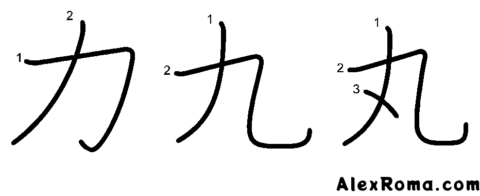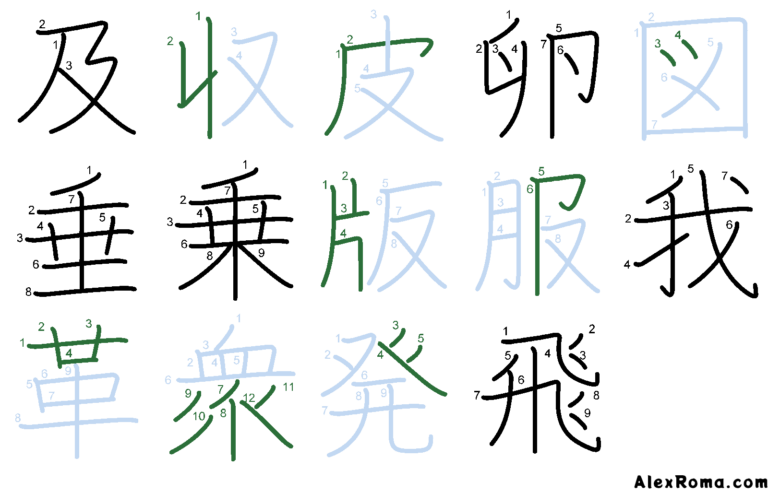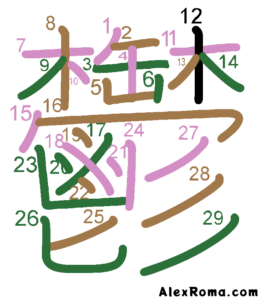Difficult stroke orders
If you made it this far, congratulations! This is the final section.
In the introduction to this guide I said that, irrespective of your knowledge of specific kanji stroke/component order rules, it is best practice to open a kanji dictionary to verify the correct writing if any uncertainty arises. Nevertheless, knowledge of the rules listed in this guide will provide a good frame of reference and help you speed up the memorisation process with the smallest effort.
It is for this reason that I want to present some of the shapes that, with regard to kanji stroke order:
- don’t follow particular rules, and
- are rare or unique.
Study and practice writing the stroke order of the characters in the following diagrams.




In the next diagram I listed a selection of kanji with stroke orders that, for whatever reason, I found particularly difficult. I highlighted the difficulty in green where the difficult part is localised.

In our last diagram: 鬱 UTSU ‘melancholy’. This is believed to be one of the most complicated kanji to write.

And on this melancholic note I am concluding my Kanji Stroke Order Guide! Please feel free to comment for advice or corrections, and share widely if you found it useful. 🙂
